Bidding farewell to the Puna and jumping on a night bus felt very much like the beginning of the final chapter of our trip: Patagonia. But before we started pedalling in southern part of this great continent, we had some admin (and shopping) to do. We made a scheduled stop in Santiago, not to visit any of the Chilean capital’s sights or museums, but instead to busy ourselves with replacing various items of equipment which had succumbed to the challenges of off-road touring.
Getting busses is one of the more controversial topics among bike tourers. While some subscribe to the EFI (Every Fucking Inch) school of thought, others acknowledge that it’s not always practical for a number of reasons, ranging from seasonal timings to safety. We always suspected that we would have to bus a large part of central Chile/Argentina. The reality of trying to traverse the Andes by ambitious off road routes in 12 months had caught up with us; if we wanted to have enough time to enjoy Patagonia, we needed to press fast forward. What they don’t tell you is that catching busses is one of the most stressful parts of bike touring! From ‘will they take our bikes?’ to ‘will the bikes survive?’. After a stressful time loading the bikes, both wheels and panniers removed to fit it in the hold, hold Liam remarked ‘that’s one thing about this trip, I’m way less stressed about things now. I know that whatever happens we’ll figure it out and we’re going one of the best places in South America to have a bike problem fixed’. This was a marked contrast to the last bus we’ d taken in Peru, gone were the cholitas in their bright skirts and mantas, no one was trying to load a mattress or TV into the hold and the air conditioning actually worked!
We unloaded in Santiago and Liam’s words would come back to haunt him. His cassette (gears) had wiggled off his wheel removing the free hub body and rear hub end cap. The latter item was not discovered to be missing until after the bus had left the terminal. A suddenly not-so-zen Liam ran fruitlessly in the direction of the departed bus. A double pronged problem solving approach involved contacting the bus company and finding the replacement part available for next day delivery on a Chilean website (surprising, given that it is a part from UK brand Hope that we did not expect to find here!) Fortunately the bus company found the small part rattling around its underbelly and he picked it up from the central station the following day. We could breathe a sigh of relief.
We spent our few short days in Santiago continuing to re-feed our tired bodies with fresh fruit and vegetables, pizza in the Italian barrio and pancakes every morning in our apartment, and some very overpriced ice cream, we took hot showers twice a day and went shopping. Unfortunately for us, Santiago’s Decathlon is in a huge shopping mall and which meant we had to dodge through dense crowds of Christmas shoppers. There’s something incredibly jarring about coming from the Puna into a multi-floored glass monstrosity full of unnecessary luxury goods and terrible Christmas music – you wouldn’t think we were facing climate catastrophe! We got what we needed and scarpered!
Our second night bus took us to Temuco, the capital of the Araucania region named after its distinctive Araucaria or Monkey Puzzle trees. Disembarking, we realised the same thing had happened again to Liam’s wheel! Nothing to fear, we knew what to look for now and combed the inside of the luggage compartment for something not much bigger than a washer. Alas, there was no sign of it, so we wheeled Liam’s unrideable bike to the nearest hostel and got on the WiFi. The semi-sleepless night had caught up with me and so I wasn’t too put out by this annoying turn of events, sleeping through most of the day. After killing some time on the second day (haircuts, clothes repairs, a visit to the UNESCO world heritage site train museum) the part was delivered and we were, finally, ready to roll!
On our last night in Temuco, we had the unexpected surprise of meeting up with our friend Becky, a riding buddy from home, who’s been in Patagonia the past year riding and volunteering at workaways. We weren’t expecting to see her until the 24th December as we’d all booked a cabin to celebrate a Christmas away from home together. Becky had been having her own share of monkey business and was on her way to Santiago to get an emergency passport after somehow managing to lose hers (in a river, she thought). She wouldn’t make it to the cabin after all, so it was lovely to see her for a brief time and catch up on all that she’s been up to.
A quick look at the map indicated that the ride out of Victoria, a small town a little further North, would be nicer and so we jumped on a small local train (yes! A train! In South America!) and after an early lunch of empanadas we were pushing the pedals out into the monkey puzzle region. It felt as though we had been transported to a new continent. There could not have been a greater contrast to the Puna. The landscape was green, full of colourful wild flowers, long grass, trees, and more lupins than you could shake a stick at. There were even signs advertising Camembert. Where we even on the same continent?! Had we fallen asleep and woken up in Europe?! It was also humid, a bizarre feeling after being in the driest environment on earth. I struggled to readjust to the feeling of being sticky and sweaty, trying to remember the last time I’d had to wipe droplets of perspiration from my upper lip, while Liam was battling something far, far, worse… hay fever!

We stopped for ice cream and antihistamines, just life’s essentials, before trying to find a camp spot. As we’d been riding along a fairly busy, tarmac road through a touristy region, there wasn’t much wild camping to be found and after a wild iOverlander goose chase we ended up in an official campsite, appalled at Chilean tourist prices and their penchant for barbed wire fences. Thankfully the next day we were able to get off the beaten track and found a ciclovia heading up the valley towards Malalcahuello. Beautiful lupins in a spectrum of pinks and purples framed views of the snow capped volcanos and I got the distinct feeling that I was really going to enjoy myself here.

We had planned to take some time off the bikes to hike up Volcan Lonquimay, but after losing time to endcap-gate, we’d written it off, instead stopping for lunch at a riverside spot on the upper reaches of the Cautin river. A french motorcyclist directed us towards a secluded river beach and we new we just had to stay there! Pondering what we were going to do all afternoon, we decided to leave our panniers behind and backtrack slightly to do a short hike from the southern entrance of the Reserva National Nalcas. Once again my senses were in overdrive, stimulated by our entirely novel surroundings. I was particularly taken by the textures of the monkey puzzle trees. The trunks are covered in wispy moss on one side (the northern side faces the sun in the Southern Hemisphere) with large lignified scales on the other. While the branches are decorated with the phyllotactic spirals of the sharp leaves. I felt the dormant plant scientist inside me re-awakening. We returned to our idyllic riverside camp knowing that my legs would be sore in the morning! Some further acclimatisation to walking was required if we were to realise some of our plans for off the bike hiking in Patagonia.

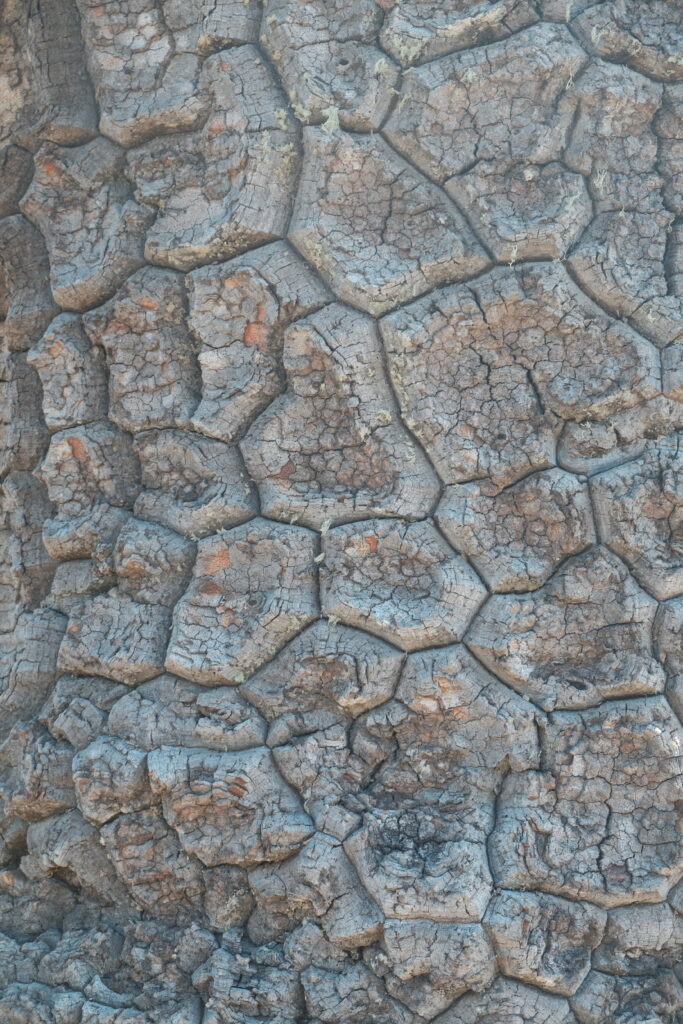


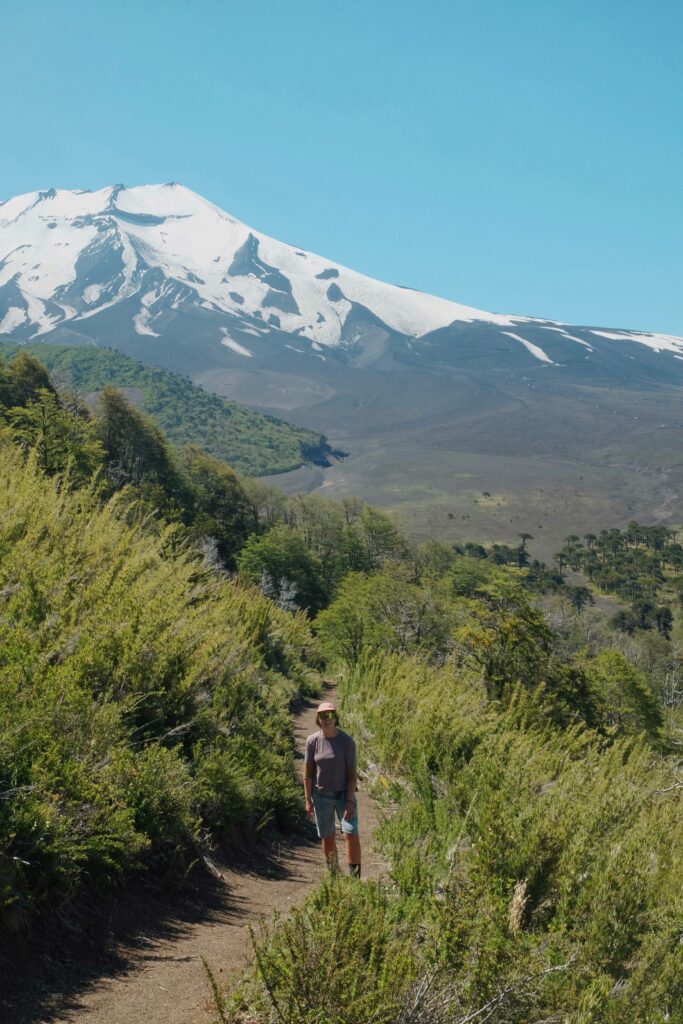
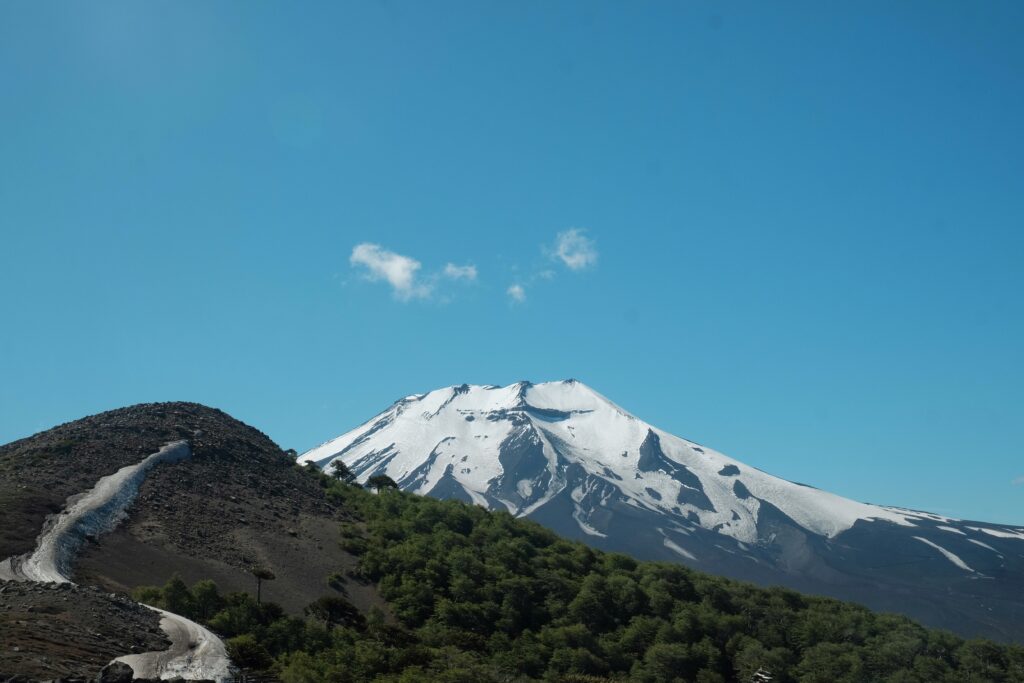


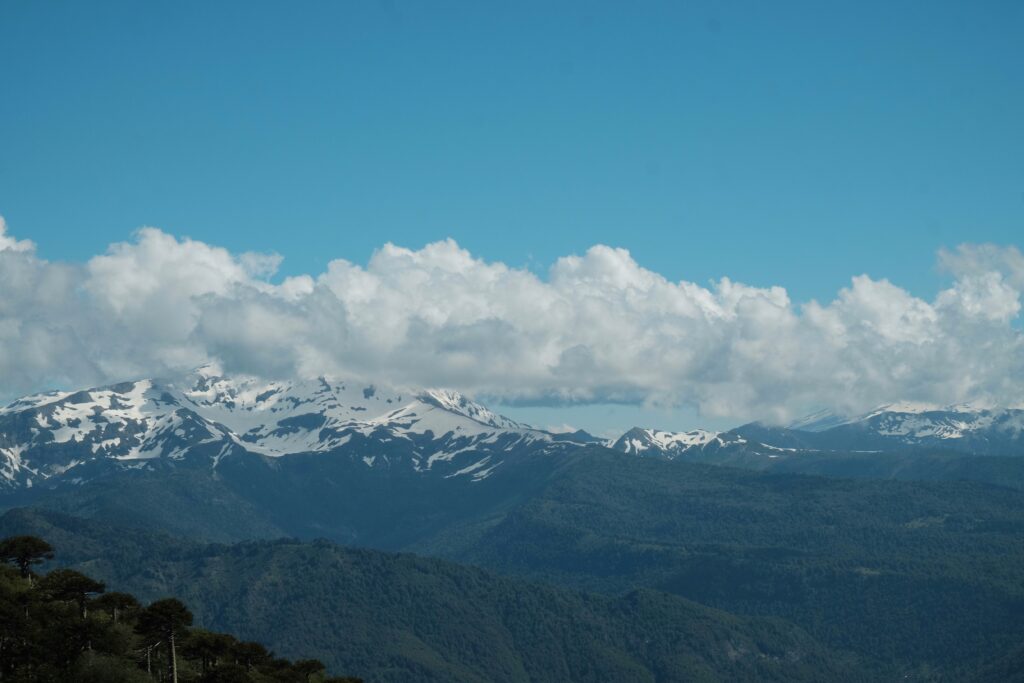
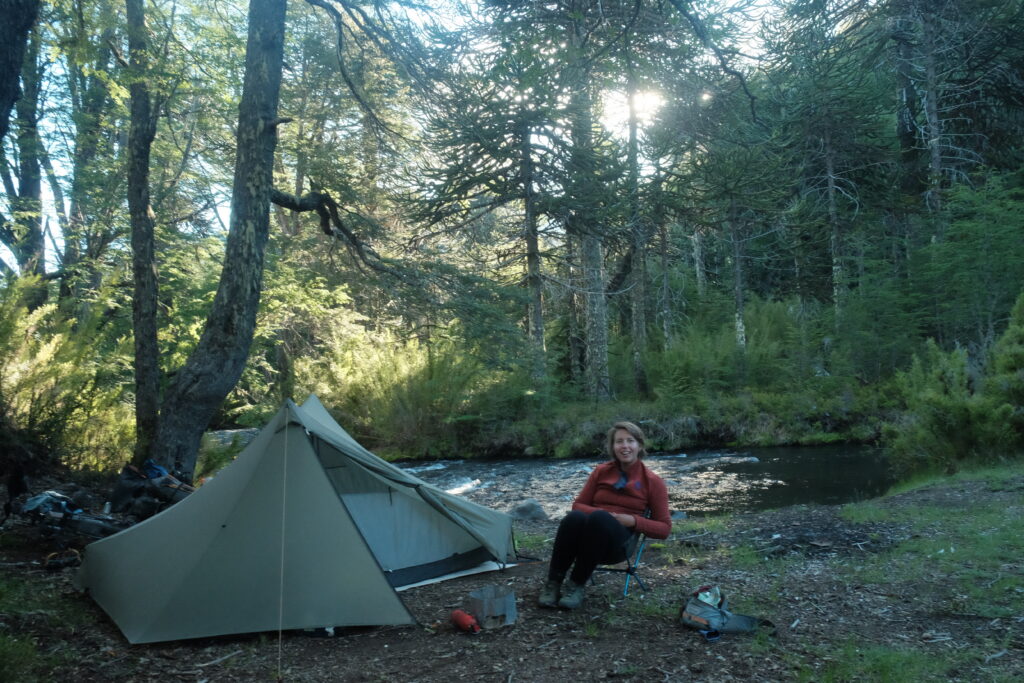
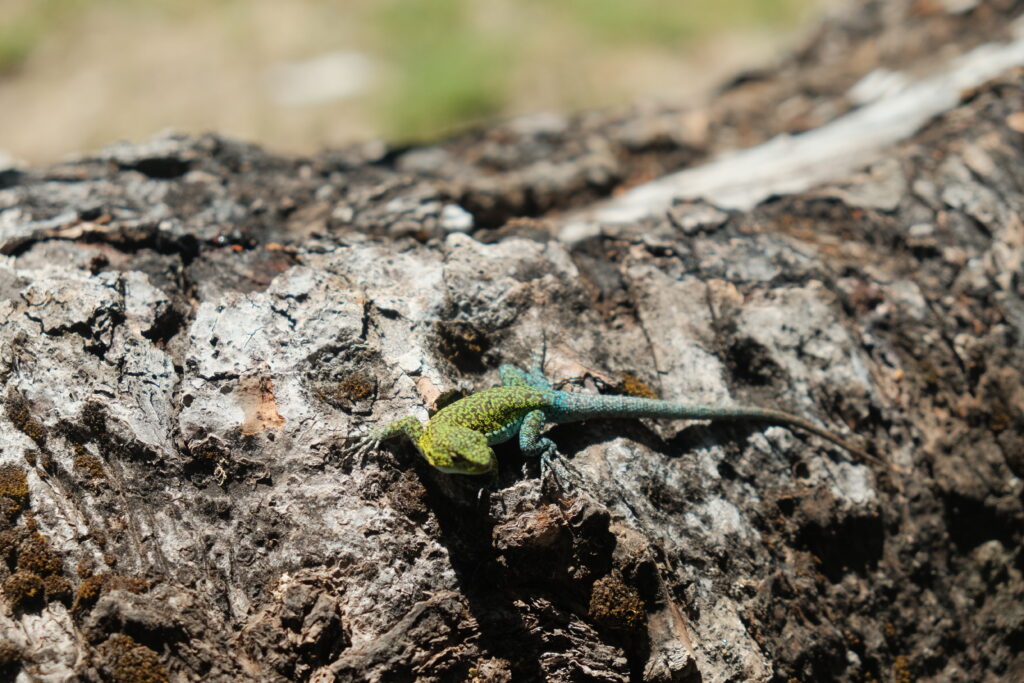
The following day, after a lush gravel climb up and descent into Lonquimay, we faced 40 or so km of tarmac to get to the Chilean boder control at Liucura. A little cooked by the afternoon heat and reassured that the border would be open on Christmas Eve (the following day), we elected to wild camp at a nearby spot under the shade of a willow tree next to the river, figuring we would climb the pass in the cooler morning air the next day.



How many people have wanted a dog for Christmas? Well, after exiting Chile we got just that when a beautiful hound we named ‘Charlie’ adopted us. She ran alongside our bikes and occasionally (worryingly) out in front of lorries. She lightened our moods considerably but then turned into a right pain in the backside when we stopped to make cheese sandwiches for lunch. Concerned that she would try and follow us into Argentina and that she probably did belong to one of the farms along the pass, we dropped her descending to Argentinian customs, hoping she would make her way back to her home.

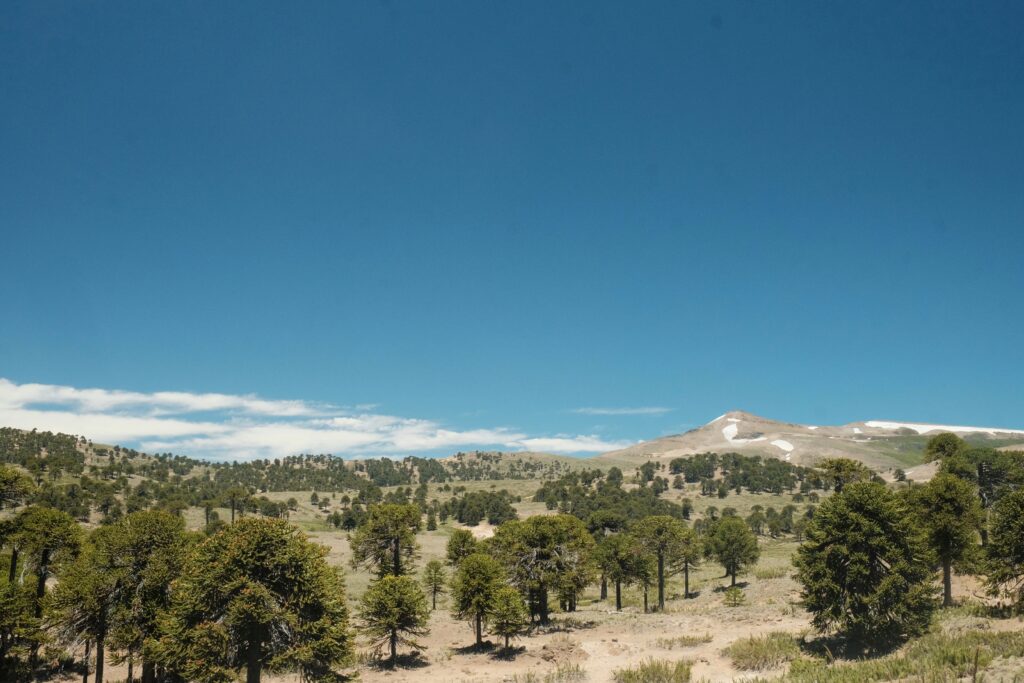
Our cabin at Horses and Huskies was almost immediately after the border post and there we were welcomed by the workaway volunteers. A number of mishaps and miscommunications meant that other than the extra (basic) food we’d brought up with us, we didn’t really have anything to eat. We tried and failed to hitchhike to the nearest town of Las Lajas for food on Christmas Day, walking back up the dirt road feeling a little dejected at the prospect of a rather measly and hungry Xmas. The volunteers, finding out about our plight, embodied the true meaning of Christmas and shared their festive grill with us. When we did finally successfully hitchhike to town on the 26th, we felt considerably more relaxed and merry thanks to a few bottles of Argentinian red!
The location of the cabin was just stunning, surrounded by Araucarias and the most striking rock formations. We enjoyed relaxing without wifi, without a blog to write or routes to plan. We read, walked, found questionable swimming spots that involved a lot of scrambling down steep valleys, indulged in a few episodes of Alone USA (it’s great! thank you for introducing us to it Suzie!), prepared a couple of our own asados (bbqs) in the fire pit opposite the cabin, and watched the beautiful evening light from the living room window.
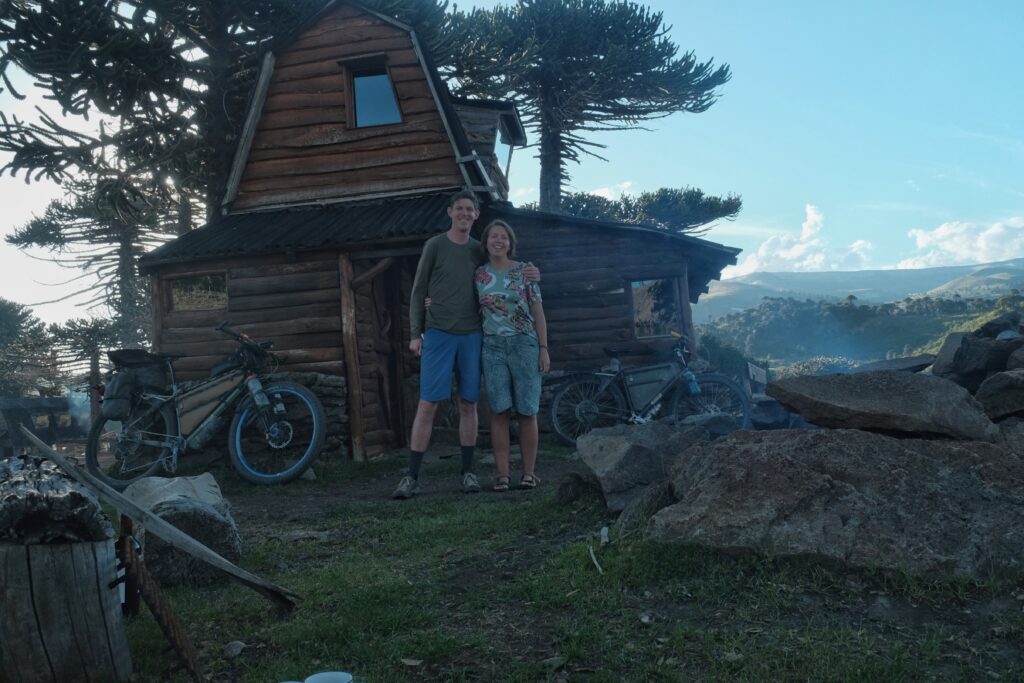
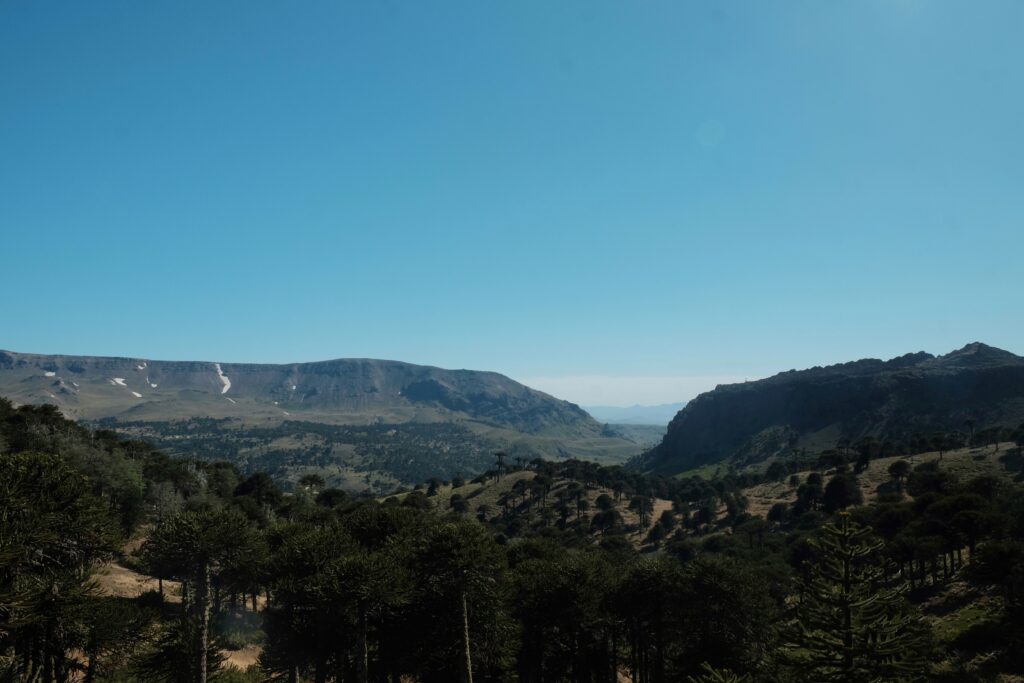



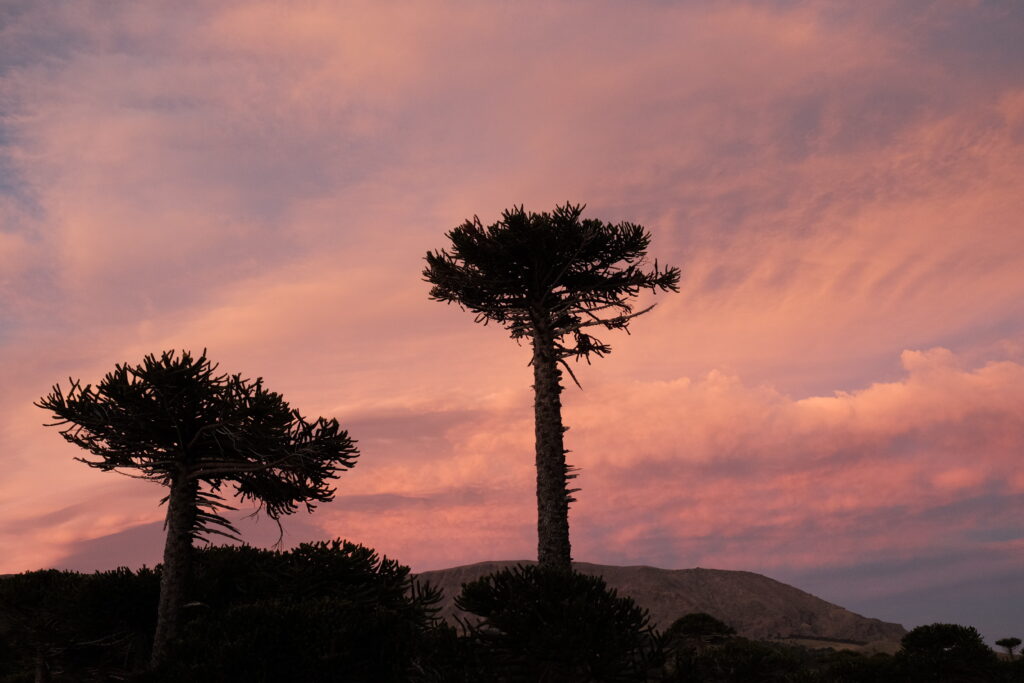
It’s truly amazing when you travel the length of a mountain range like the Andes, how much the life around you changes, not just from the latitude but also from the changing altitudes: from the banana trees and giant blue butterflies of the Colombian lowlands, to Frailejons in the Colombian and northern Ecuadorean highlands, the flamingos of Bolivia and now the Araucanias of Northern Patagonia. There will be a time when Patagonia itself becomes bleak with strong winds and little greenery but for now, I’m very content.
Finally, we’d like to say thank you to everyone who has voiced their appreciation for us taking the time to share our travels. It’s certainly not been easy to keep up with our ambitious schedule while also taking time to write, edit photos and find wifi to upload them all. We’re curious about experimenting with a creator account which allows anyone who is enjoying our blogs to support us with a small contribution (which will also sustain us in visiting coffee shops to use their wifi!). If you’d like to support us you can head to our new ko-fi page here. Muchas gracias.
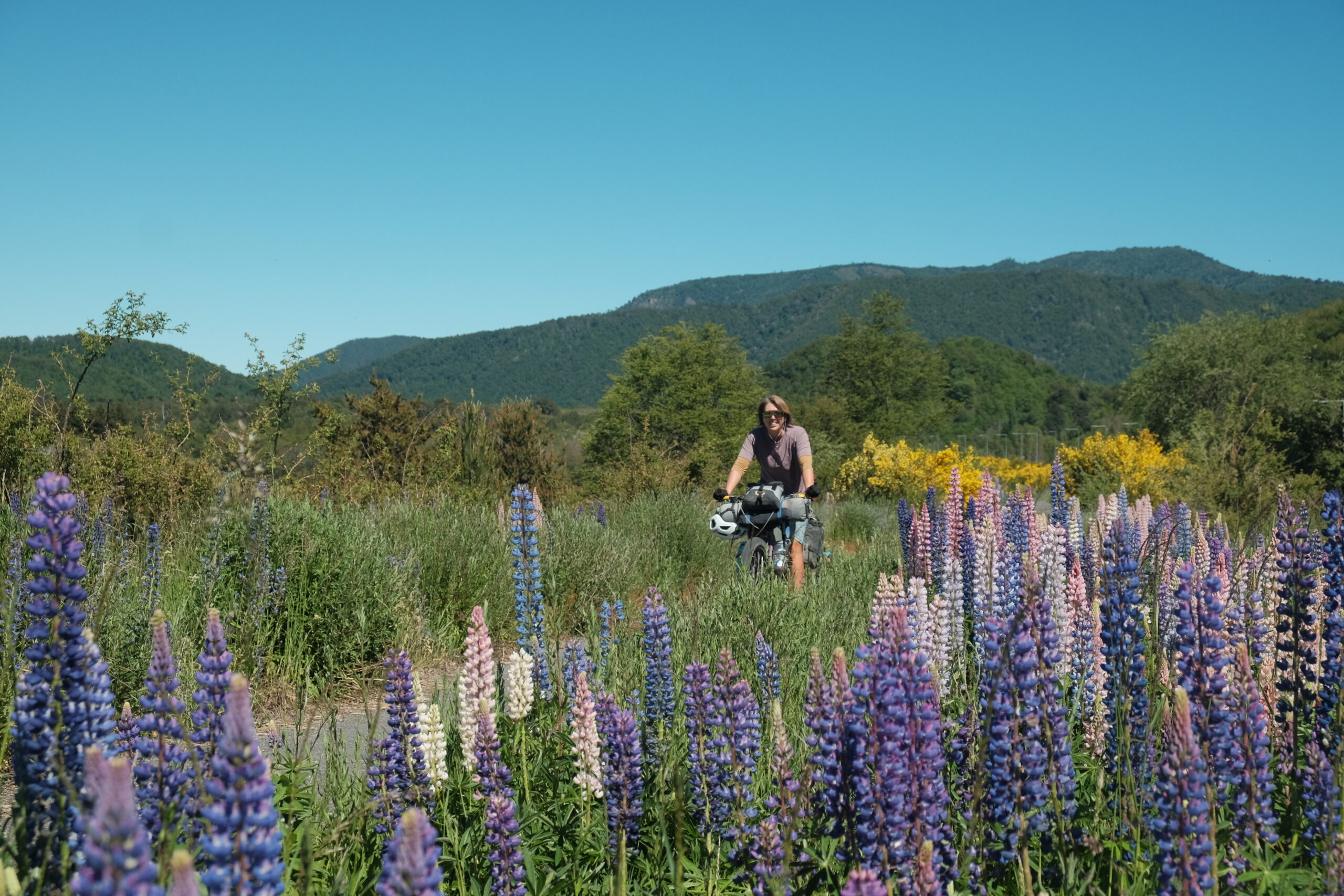
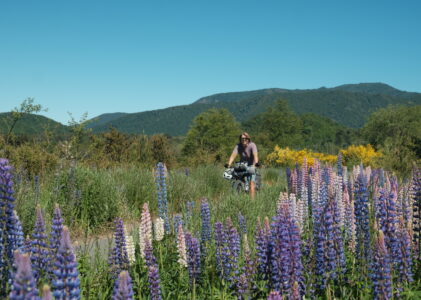
Nice to see you have time to blog.